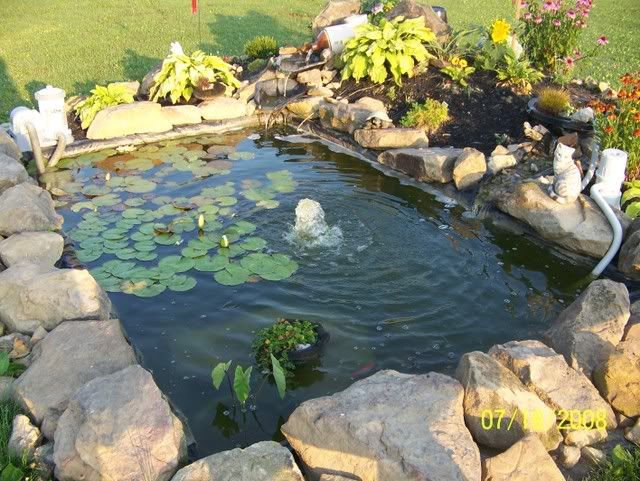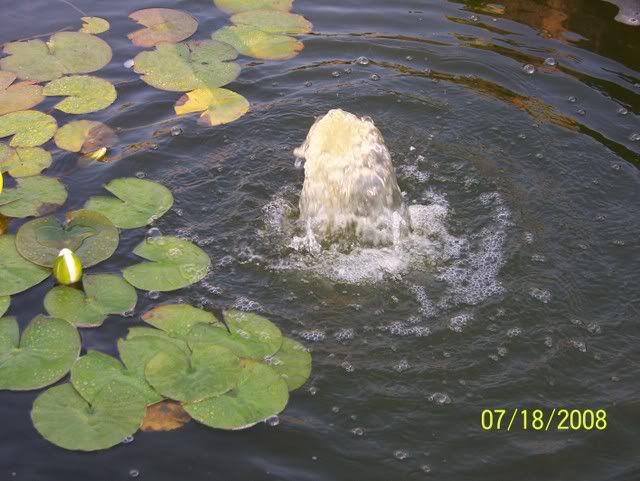 by Steve on Mon Jul 21, 2008 2:12 am
by Steve on Mon Jul 21, 2008 2:12 am
If you decide to purchase a UV light, make sure you check out the manufactures specs and pick one to match your flow rate. UV lights can function as either a sterilizer or a clarifier. As a sterilizer your water will become clear. As a clarifier you still may have a slight green tint to the water, but adding plants like water lettuce or hycinthia will help clear this (having a 50% or greater coverage).
The slower the flow rate, the more UV exposure time increases and your UV will function more as a sterilizer. The faster the flow rate, the less exposure time, and the more the UV functions exclusively as a clarifier. The water will take longer to clear at slower flow rates, and in some conditions (direct sunlight, overstocked pond, etc.) never achieve the same level of clarity as it would at higher flow rates.
You can control the flow rates of the UV with the use of a ball valve. The optimum flow rate is to turn over your pond once an hour or at a minumum once every other hour. Installing a ball valve allows you to experiment with the flow rate to see what best works.
As far as testing your ponds KH there is no "correct" answer. KH is a measure of the carbonate and biocarbonate ion concentrations dissolved in water. It provides the necessary buffer in order to maintain a steady pH. There is no magic number. Maintaining a high KH helps maintain a stable pH, preventing the possibility of a pH crash. Green water or algae growth can destabilze the pH of the water by producing CO2 at night to give low pH at sunrise, consume CO2 in the day to give relatively high pH at sunset. Higher alkalinity helps stabilizes this pH cycle. Adding baking soda is one way to increase your buffer. I also find using Koi Clay increases my KH. At a minimum you don't really want to go below 80 ppm. I try to stay above 125 ppm.
Steve





